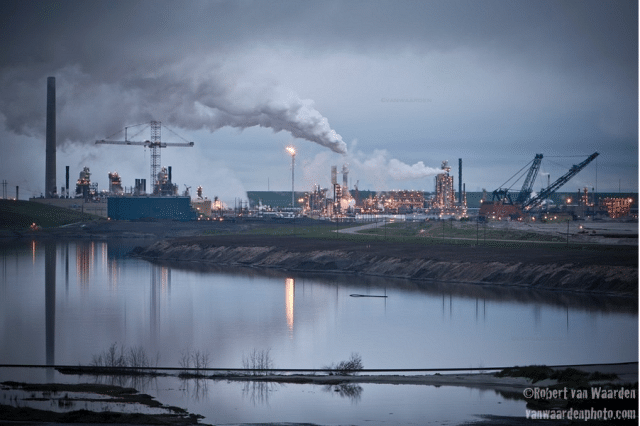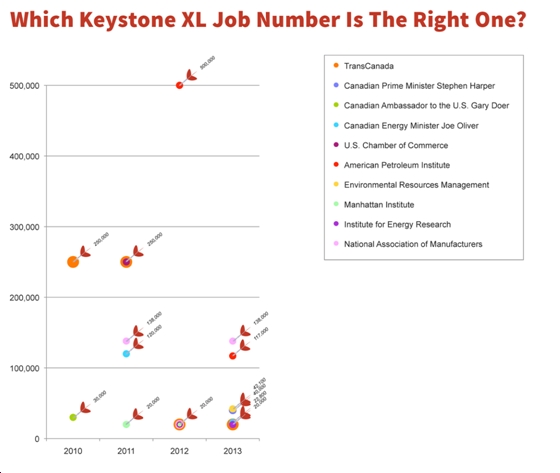This is a guest post by Mike Casey, originally published at Scaling Green.
There is less than a month before the justices of the Nebraska Supreme court hear arguments in a case that will have a big impact on TransCanada’s proposed Keystone XL pipeline. The court will hear the argument that ranchers and farmers in the pipeline’s path must have their lifestyles ruined first before standing up to the bullying and lies by TransCanada. I’m not making that up – it’s the actual argument that TransCanada’s apologists are saying. Good luck with that.
A loss in court for TransCanada would be significant for the premier pusher of tar sands, the dirtiest form of oil on the planet. The result would be hitting the “restart” button, with new pressure to reroute the pipeline and its highly toxic, spill-prone contents away from the Ogallala Aquifer, the source of drinking water for three million Americans and countless, drought-stricken farms and ranches.
However, the company’s Keystone problems are far more extensive than just this court case. Markets and the truth are walking away from this project. This is despite the desperate, high-dollar propaganda and influence-peddling campaign by the tar sands industry. Keystone’s rejection is not just the smart thing to do. It’s increasingly inevitable.
Impending loss now defines this project.
Since the President’s June 2013 speech on the importance of solving the climate crisis, at least eight events have happened that indicate the pipeline will not and should not be built:
In addition, a March 2014 report by The Carbon Tracker Initiative found that Keystone XL would enable oil companies to generate 5 billion tons of CO2 by 2050,equivalent to the annual carbon pollution from one billion cars, or 1,400 coal plants.
-
Keystone XL Can’t Pass The President’s Climate Test: President Obama declared he’d approve Keystone “only if this project does not significantly exacerbate the problem of carbon pollution.” Mounting evidence from scientists and researchers worldwide show you can’t square the circle of addressing the climate crisis while developing the dirtiest source of oil in the world. These experts include:
- Dr. Marc Jaccard, an environmental economist with Simon Fraser University;
- Dr. John Abraham of the University of St. Thomas; and,
-
Clare Demerse, federal policy director at the Pembina Institute.
-
TransCanada has been caught lying repeatedly about where Keystone XL‘s oil, once refined, will go. TransCanada has frequently characterized Keystone XL as “energy from a trusted ally” that will ensure American energy independence. However, when asked directly how much of the refined oil will stay in the U.S., TransCanada CEO Russ Girling said, “every drop of crude will stay in the country.” [Emphasis added.] But when TransCanada executive Alexander Pourbaix was asked under oath to state how much oil would stay in the U.S. for our energy independence, he said: “I can’t do that.” In fact, statements from tar sands industry executives and analysts have said as much. In a Bloomberg News story with a very telling headline, “Total CEO Urges Keystone Approval to Unplug Alberta Bottleneck,” Total’s Christophe de Margerie said, “The pipeline has to be done” in order to open up tar sands development, which will produce significant greenhouse gas emissions as a result.
-
The oil isn’t “coming out of the ground anyway,” it only comes out at scale uniquely critical to scaling tar sands – Perhaps the biggest lie pushed by the tar sands lobby is that Keystone XL doesn’t have a significant pollution footprint because the tar sands will “come out of the ground anyway,” regardless of the path to market. Except, that it won’t. Other pipelines don’t reach the same unique, large and specialized refining capacity on America’s Gulf Coast. And rail shipments can’t replace Keystone’s efficiency in getting this dirty oil to the unique, large-scale refining capacity on America’s Gulf Coast. Rail volume can’t equal that of pipelines. (The hazard of rail shipments isn’t an argument for pipelines; it’s another argument for keeping filthy tar sands oil in the ground). Keystone XL is the only path to rapidly scaling this filthy oil.
-
Keystone XL‘s South Dakota Permit Has Expired: TransCanada will have to prove to a group of elected members of South Dakota’s Public Utilities Commission (PUC) that it still meets the original conditions for approval set four years ago on June 29, 2010. There’s a lot that’s changed that TransCanada will have to explain.
Given the pipeline’s heightened profile, the PUC will receive challenges to the pipeline via public comments and requests to appear at any hearings. Challengeswill likely focus on three areas: 1) the pipeline would cross and impact parts of the ceremonial, burial and other culturally significant sites to the Sioux; 2) the pipeline could have a devastating ecological impact on the sensitive Sand Hills region, which extends into South Dakota from Nebraska, wetlands and other areas along its path; and 3) the oil from the pipeline is not needed given the availability of light oil from fracking and crude oil through rail, barge and other pipelines.
In addition, in an interview with South Dakota Public Broadcasting, Commissioner Gary Hanson said since the Keystone XL‘s route through Nebraska is uncertain pending the State Supreme Court’s decision, the South Dakota PUC may not reissue a permit until there is a route through Nebraska. Any changes to Nebraska’s route could affect the South Dakota route, and an altered route could require a more robust examination of the project since the time the pipeline was previously approved.
-
Security is lacking: A recent threat assessment by retired SEAL Command Master Chief Dave Cooper found that KXL would pose a very attractive “soft target” for terrorists due to its location, its high profile and the large amount of highly toxic and flammable material it would carry across farmlands and public waterways. Cooper found that “a handful of terrorists could use just four pounds of explosives at each of three pump facilities” to “trigger a catastrophic spill of 7.24 million gallons of dilbit (with its highly toxic chemicals).” In response, the Transportation Security Administration admitted to Businessweek that it had not run the threat assessment that Cooper suggested was needed.
-
Keystone Could Endanger Water Supplies for Millions of People in Its Path: According to the Sierra Club, “Keystone XL pipeline would cross more than a thousand U.S. rivers, streams, lakes, and wetlands, including the Ogallala aquifer, which supplies 81% of water used in the Great Plains, drinking water for two million Americans, and one third of the water used for agriculture in our country.” A Keystone XL spill into those water supplies could be catastrophic for the communities impacted.
-
TransCanada and the tar sands lobby have been caught lying again – this time on job claims: Between 2010 and 2013, TransCanada and Keystone XL supporters have changed projected job numbers at least 11 times. The numbers differ significantly from the State Department’s own study of Keystone XL‘s job creation potential.
Photo credit: Robert van Waarden
Subscribe to our newsletter
Stay up to date with DeSmog news and alerts







